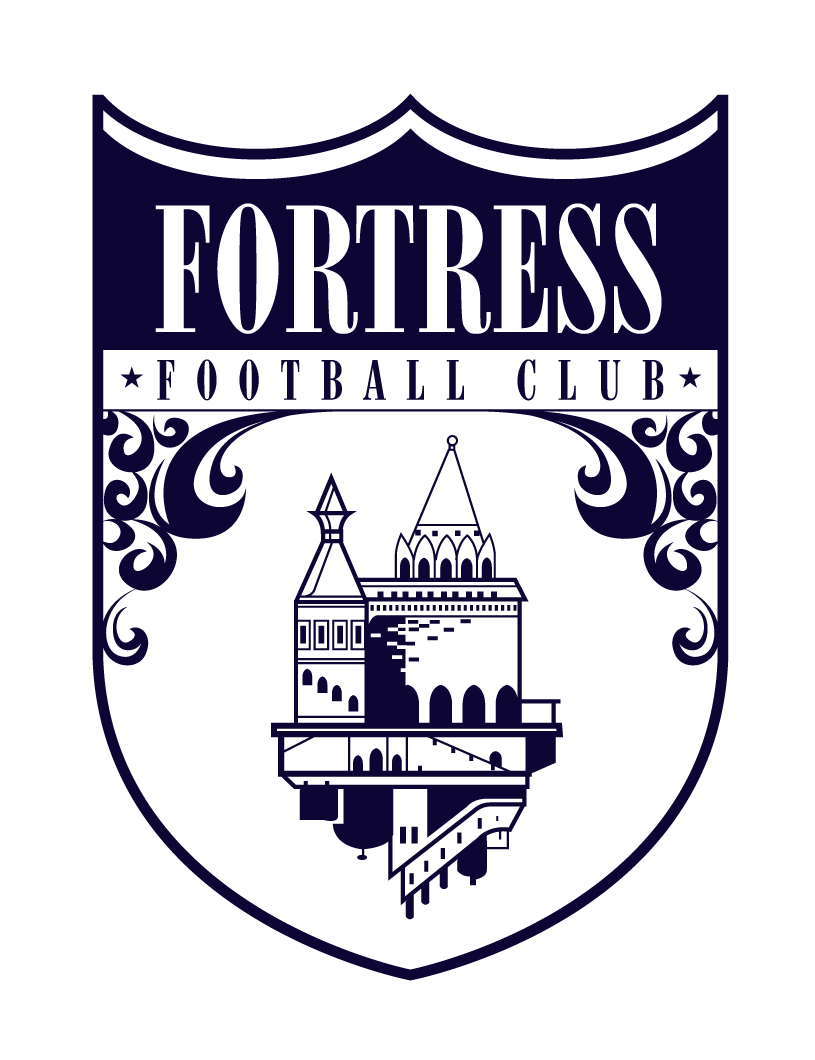The Striker
Growing up, I was always fascinated to watch the best goal scorers in the world. These were often strikers. They were all different, had different styles of play, and yet many of them had similar qualities: speed, tenaciousness, presence, courage, power, and hunger. All great strikers have these attributes. And all of them were exciting to watch. Let’s explore what makes a striker different than a winger or traditional forward.
The striker is at the top of the formation and can be found in the middle. His number designation is 9. In a 4-3-3, we’ll see him here:
Traditional number 9’s are big, tall, and have an unbending will. This can be seen in the likes of Zlatan Ibrahimovic of AC Milan or Erling Haaland of Borussia Dortmund. I hesitate in saying “traditional" because both of these players have incredible skill with the ball as well. They fit the look, certainly, but they’re also representative of an evolution, a striker who has physicality who can also run, dribble, and pass like a smaller man.
The first moment I saw this evolution was in the likes of Ronaldo, the Brazilian player, in the early 90’s playing for Barcelona and Inter Milan. In those days, you knew that if he was playing you’d see at least one goal that game, if not multiple from him. He blended incredible attacking speed with brilliant ball control. Standing at 6 feet tall, he was strong at 200 pounds (comparatively, Cristiano Ronaldo is 6’2” and 184 lbs). He was able to beat his opponent with speed, skill, and power. Every striker should have role models to watch and follow. Choosing him as an on-field role model would be a wise decision. Here’s a video with some highlights. He was followed by a man named Adriano (at Brazil and Inter, incredibly promising but didn't last long enough to go down in history as one of the best.)
Notice their willingness to give everything to help their teams to win. Both Ronaldo and Adriano received many accolades because of their goal scoring prowess. They each had incredible shooting abilities and were never afraid to take the shot. We see this in the likes of Lionel Messi, Sergio Aguero, Cristiano Ronaldo, and Kylian Mbappe today. Strikers should never be afraid to shoot. And when they’re near the goal, they’re zeroed in on where the goalie is and the amount of space they need to get the shot off. They take every opportunity they’re given and know in their minds they’re responsible for the amount of goals their team has at the end of 90 minutes.
Another important factor is a striker’s timing. This is different than a defenders, wingers, or midfielders. Timing for a striker involves when to arrive inside the box so he can get to the ball before the defender does. This may seem counter-intuitive. You may think, why doesn’t the striker just arrive in the box first and stand in front of the goal? If a striker arrives before the ball is played into him, he has to compete with one, two, three, or more defenders for the ball.
The defenders are marking the striker. As he is usually the player closest to the opposition goal, the opposition want to make sure he’s marked tight when the ball is anywhere near him. If the striker decides to go into the box seconds before the ball comes, he will be surrounded by defenders at that moment and a clear channel into him will not be available.
If he instead waits for the winger or midfielder to open up space for the pass and then make a run, his teammate can find him open in front of the net. Manchester City did this so well during their Premier League titles the past two years. Sergio Aguero and Gabriel Jesus filled this important role well, just like Samuel Eto’o did at Barcelona.
A great striker also learns to make diagonal runs behind the defense. They position themselves in between the two center backs, or even a fullback and a center back, leading to possible confusion of who is responsible for the lone striker. This also opens space for their wingers and attacking midfielders to run into, knowing that their teammates have a possibility of scoring or that they’ll get the ball back close to goal. See a tactical profile of Sergio Aguero here for examples of this.
They are also adept at pressing the opposing defenders without the ball. They understand where their teammates are and sprint to win the ball back, trapping the defenders in their territory so they turnover the ball in a bad place. Look no further than Roberto Firminho at Liverpool to witness this. His level of energy and understanding of spatial responsibility is the best in the game right now (See Liverpool’s pressing tactics here). Games from Barcelona’s 2014-2017 shows Luis Suarez doing this exceptionally.
A great striker is hard to find. They have the responsibility of goal scoring on their shoulders. To become a top goal scorer, one needs to practice a lot. Their passion for the game must run deep. They must think about it, visualize it when they’re off the field, watch good examples of it with the intention of learning from it, and play a lot. A great striker has a "nose for the goal”. They take every opportunity and chance that’s handed to them. Let’s learn from this as we continue our journey in scoring goals.
Skills Practice at Home - 15 minutes
Wall Ball - 5 minutes
Juggling with a Smaller Ball - 5 minutes
Wall Pass Turn - 5 minutes
See you tonight.

